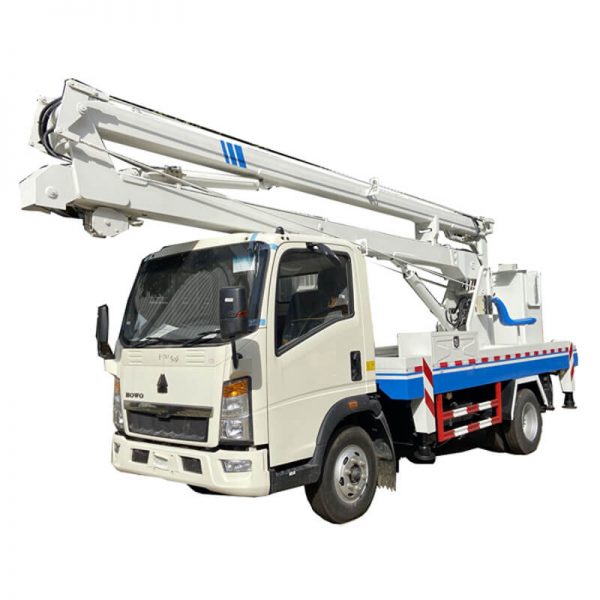Introduction
Garbage truck collection plays a crucial role in maintaining cleanliness and sanitation in urban environments. As populations continue to grow and urban areas expand, the demand for efficient waste management systems has become increasingly important. In this article, we will explore the evolution of garbage truck collection, from its humble beginnings to the sophisticated systems in place today. We will discuss the different types of garbage trucks used for collection, the challenges faced by waste management authorities, and the innovative solutions being developed to address these challenges.
History of Garbage Truck Collection
The concept of garbage collection dates back to ancient civilizations, where waste was often disposed of in open pits or bodies of water. As cities began to grow in size and population, more structured waste management systems became necessary. The first garbage collection services in urban areas involved individuals known as "scavengers" who would collect waste from households and businesses using carts or wagons.
The advent of motorized vehicles in the late 19th century revolutionized waste collection practices. The first motorized garbage trucks were introduced in the early 20th century, equipped with compactors to increase the amount of waste that could be transported. These early garbage trucks were often open-air vehicles, exposing workers to health hazards and creating unpleasant odors in residential areas.
Types of Garbage Trucks
Over the years, various types of garbage trucks have been developed to meet the diverse needs of waste management authorities. The most common types of garbage trucks include:
1. Rear Loader Trucks: Rear loader trucks are equipped with a hydraulic lifting mechanism at the rear of the vehicle, allowing workers to empty bins into the truck's hopper. These trucks are commonly used for residential waste collection and are ideal for areas with limited space for maneuvering.
2. Front Loader Trucks: Front loader trucks feature a hydraulic lifting mechanism at the front of the vehicle, allowing workers to empty large dumpsters into the truck's hopper. These trucks are commonly used for commercial waste collection and are designed to handle large volumes of waste efficiently.
3. Side Loader Trucks: Side loader trucks feature a hydraulic lifting mechanism on the side of the vehicle, allowing workers to empty bins without the need for manual lifting. These trucks are often used in areas where curbside collection is common and are designed for quick and efficient waste collection.
Challenges in Garbage Truck Collection
Despite the advancements in garbage truck technology, waste management authorities face several challenges in providing efficient and sustainable waste collection services. Some of the key challenges include:
1. Traffic Congestion: Urban areas are often plagued by traffic congestion, making it difficult for garbage trucks to navigate through narrow streets and crowded neighborhoods. This can lead to delays in waste collection and increased operating costs for waste management authorities.
2. Environmental Impact: Garbage trucks are a significant source of greenhouse gas emissions and air pollution. The use of diesel fuel in garbage trucks contributes to air quality issues and climate change, prompting the need for more sustainable alternatives.
3. Waste Sorting and Recycling: Proper waste sorting and recycling are essential for reducing the amount of waste sent to landfills and incinerators. However, many communities struggle with low recycling rates and contamination of recyclable materials, leading to inefficient waste management practices.

Innovations in Garbage Truck Collection
To address these challenges, waste management authorities and technology companies are developing innovative solutions to improve garbage truck collection systems. Some of the key innovations include:
1. Electric Garbage Trucks: Electric garbage trucks are becoming increasingly popular as a more sustainable alternative to traditional diesel-powered vehicles. Water tank truck inspection produce zero emissions and are quieter than diesel trucks, making them ideal for urban areas with strict environmental regulations.
2. Automated Waste Collection Systems: Automated waste collection systems use underground pipelines to transport waste from homes and businesses to central collection points. This reduces the need for traditional garbage trucks and minimizes the impact of waste collection on the environment.
3. Smart Waste Management Technologies: Smart waste management technologies, such as sensors and GPS tracking systems, are being integrated into garbage trucks to optimize route planning and improve operational efficiency. These technologies provide real-time data on waste collection activities, allowing authorities to make informed decisions and reduce costs.
Conclusion
Garbage truck collection has come a long way since its inception, with significant advancements in technology and innovation transforming waste management practices in urban environments. As populations continue to grow and environmental concerns become more pressing, the need for efficient and sustainable waste collection systems has never been greater. By embracing new technologies and best practices, waste management authorities can improve the efficiency, safety, and sustainability of garbage truck collection, ensuring cleaner and healthier communities for generations to come.
